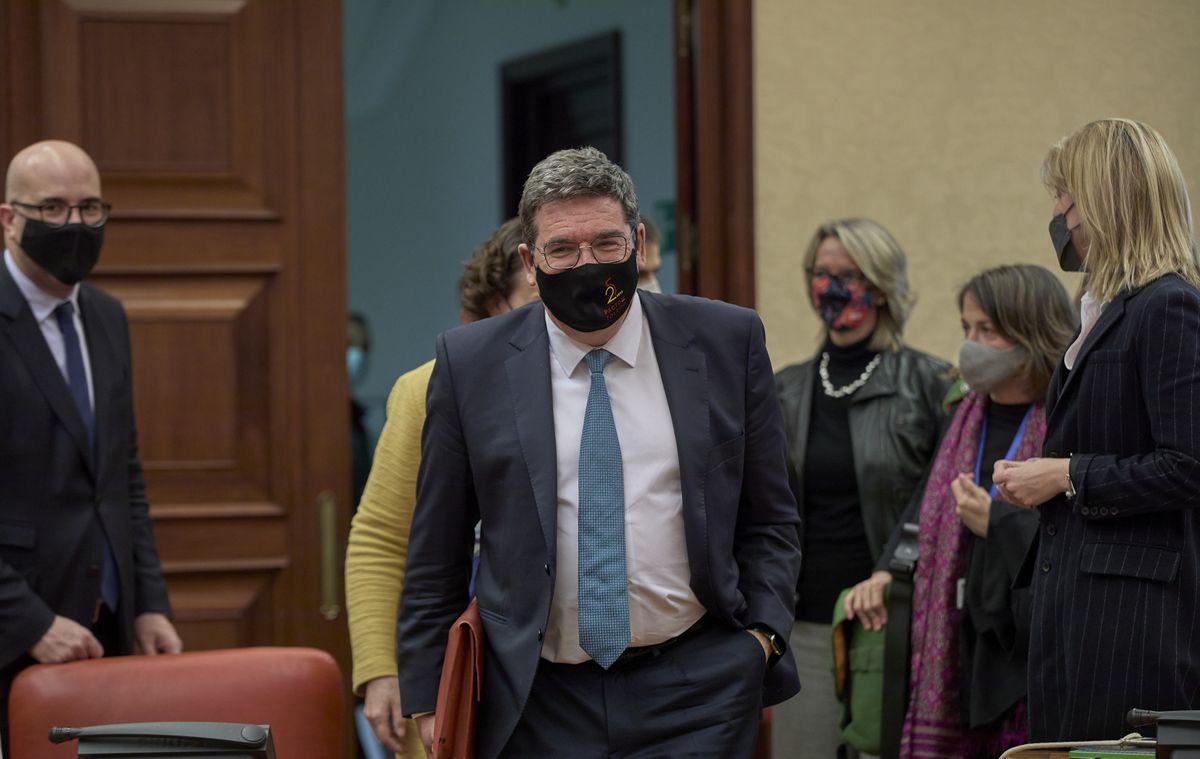The Government proposes that the self-employed pay fees of between 90 euros and 1,220 euros per month when it begins to apply the new contribution system based on income. Self-employed workers who earn the least will pay less and those who earn more, higher amounts, in a scheme distributed in 13 sections.
And, according to the Government’s calculations, on average a self-employed person would pay 275 euros per month . This is the offer that the employers and unions have on the table right now, according to a document that Cadena SER has advanced and to which EL PERIÓDICO has had access.
This is the approach of Minister José Luís Escrivá , but not that of the social agents, whose positions are still very distant.
Escrivá said in his appearance on Wednesday that a first agreement on pensions was “imminent”, although it will not include the details that have emerged this Thursday on the new proposal for the self-employed. The approach already transferred weeks ago of postponing the entry into force of the system until 2023 and that it was not at full capacity until 2032 was no longer liked by part of the table.
And the sections and amounts between 90 and 1,220 euros are not to the liking of all parties either. The agreement looks distant in this area and the details that have transpired will change if Social Security wants to close it with an agreement.
According to the scheme designed by Escrivá’s negotiators, the transition between one model and another would be progressive. Right now the minimum fee, with the flat rate, is close to 60 euros. And it progressively rises to a minimum price of about 288 euros per month .
With the new system, the flat rate would disappear and the self-employed with lower incomes, that is, returns of 3,000 euros per year or less (250 euros per month), would pay 90 euros. And, at the other extreme, those who had returns of more than 48,841 euros per year (4,070 euros per month) would pay 1,220 euros per month of installment. An amount similar to the 1,245.45 euros that currently represents the maximum fee that a self-employed person can pay.
In other words, according to Escrivá’s scheme, those who pay the flat rate would pay more, those who have run out but have little income would pay less and those who earn more would pay the same. However, the crux of the matter lies in that middle band in which the majority of the 3.2 million self-employed currently operating in Spain would move.
These would go on to pay according to their income, when right now eight out of 10 pay according to the minimum base (regardless of whether they earn a lot or a little).
If we take into account the median (that is, the approximation to what a self-employed person would pay more frequently), the differences between what they pay now and what they would pay with the new scheme would not be many. Well, currently most pay the minimum fee, 288 euros, and the median with the new system would be 275 euros.
According to preliminary calculations that the Government has been transferring to social agents during the months that they have been discussing this matter, a self-employed person would end up paying, on average, a fee of 275 euros per month . Well, according to those same calculations, the net return among the group is 23,140 euros per year.
There would be 459,906 freelancers who would pay those 90 euros; another 599,945 workers who would pay between 90 and 185 euros; another 1.3 million that would pay between 235 euros and 545 euros and the remaining 800,000 that would either pay between 670 and 1,220 euros or Social Security is not able to fit them into any range.
Negotiation in progress
Escrivá raises this system of tranches to employers and unions, with an approach to reviewing it every three years during that adaptation period between 2023 (when it intends for it to come into force) and 2032 (when it wants it to be at maximum performance).
There are agents sitting at that table who openly reject Escrivá’s proposal. Others frown on some parts, such as the fact of his long transition period, but others favorably. The common point is that they do not buy Escrivá’s latest proposal in full and this will lengthen the negotiations.
Although the reform of the self-employed contribution system was within the second block of reforms that Escrivá intends, friction in this matter may cause alterations in the consensus on the first block, regarding the formula for revaluation of the pension system. The “imminence” of the agreement on that front may not be such due to differences on this issue.



 Bitcoin
Bitcoin  Ethereum
Ethereum  Tether
Tether  XRP
XRP  Solana
Solana  USDC
USDC  TRON
TRON  Cardano
Cardano  Lido Staked Ether
Lido Staked Ether  Avalanche
Avalanche  Toncoin
Toncoin